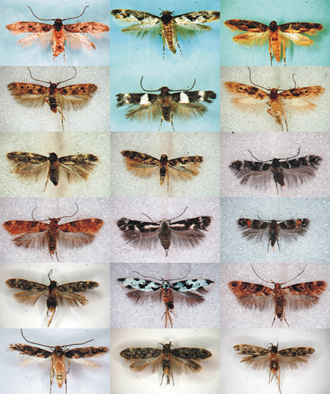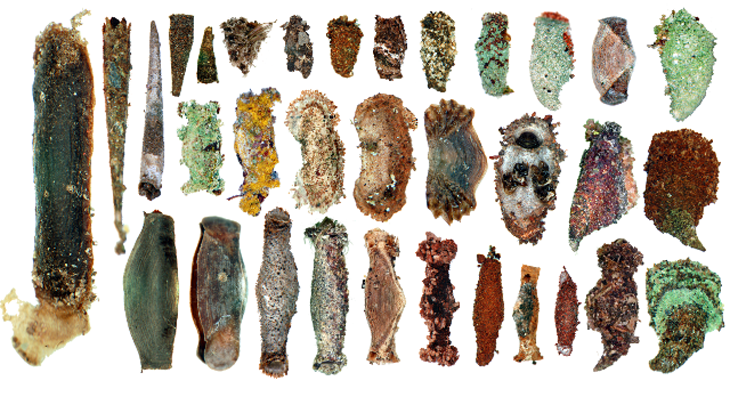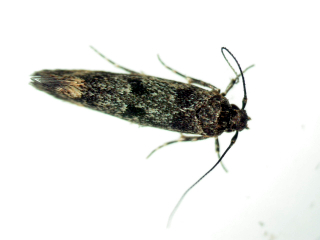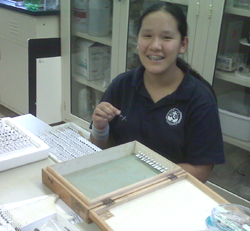Molecular
systematics and adaptive radiation of the Hawaiian endemic
moth genus Hyposmocoma (Lepidoptera: Cosmopterigidae)
Remote volcanic island archipelagos
make incomparable natural laboratories for the study
of patterns of diversification and species formation.
In the Hawaiian Archipelago, an isolated island chain
in the middle of the Pacific Ocean, the extreme isolation,
topographical diversity, and chronological linear arrangement
of islands provide an unparalleled natural experiment
for observing processes of adaptive radiation, and the
evolution of ecological and phenotypic diversity within
a rapidly multiplying lineage. The endemic cosmopterigid
moth genus Hyposmocoma is one of the greatest
radiations in the Hawaiian Islands, and may rival or
exceed Drosophila in endemic Hawaiian species
diversity. The species of Hyposmocoma occupy
an extraordinary diversity of native habitats and include
at least a few aquatic species on each of the main islands.
Another remarkable trait of Hyposmocoma is the
spectacular diversity of cases carried through larval
development as shelters. Hyposmocoma’s
utility and importance is not simply due to the high
number of species in the genus, but also it is the remarkable
ecological diversity of the group, which even includes
predatory species, and the evolutionary resource this
exceptional model provides for understanding the mechanisms
and patterns of diversification and species formation
on islands, as well as across vastly different environments.
We propose to conduct a broad survey of the diversity
of the microlepidoptera belonging to the speciose genus Hyposmocoma throughout
the Hawaiian Archipelago. Newly acquired data will be
integrated into an existing database. Specifically, we
will employ a total evidence approach including molecular,
morphological, and ecological characters to reconstruct
phylogenetic relationships among species in the aquatic/terrestrial
and related clades. This research project will provide
insights into the evolution of ecological novelty and
address fundamental questions about the relationship
between ecological diversification and patterns of speciation
because the factors that foster or limit ecological diversification
may bear directly on rates of speciation. Island systems
offer successful colonists unique opportunities to diversify
into niches that might not be available in geologically
older, less isolated and as a result, ecologically more
complex continental ecosystems. Such opportunities reveal
novel propensities to invade, colonize, and speciate
into dissimilar niches as indicated by the shifts between
aquatic and terrestrial species in Hyposmocoma.
But specific understanding of the evolutionary processes
leading to such dramatic life history shifts is often
lacking. Hyposmocoma offers a unique opportunity
to study a monophyletic, species rich, ecologically diverse,
and conservation relevant island radiation.
|







